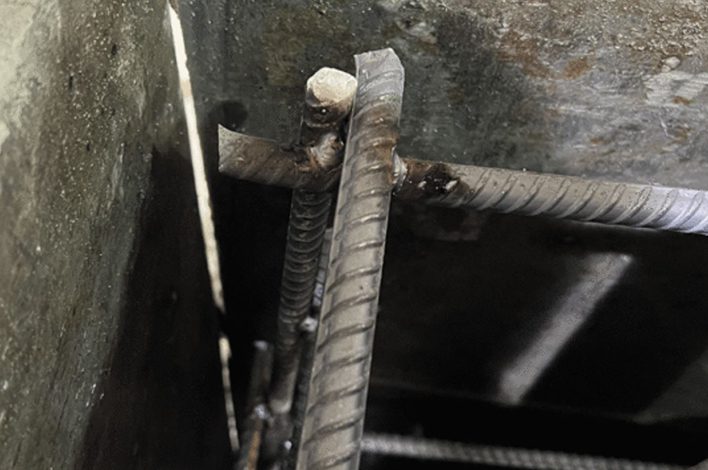Questions from the Field is a selection of questions NPCA Technical Services engineers received from calls, emails, plant evaluations and comments on blog posts or magazine articles posted to Precast.org.
Chris asks:
When producing vaults, can we butt or cross the horizontal bars in the wall corners and weld them together?
NPCA technical experts answers:
Butt joining or crossing and welding horizontal reinforcing in the corners of vault walls does not provide the reinforcement continuity around the vault wall corner required for strength. We suggest using U-shaped horizontal bars and lapping them down the long wall with the minimum lap splice required by code.
For an example of proper horizontal reinforcement across vault wall corners, see the photo below.
Also note that if your vault top slab and base slab are monolithically cast with the vault walls, the vertical wall reinforcing must develop (hook) into the top slab and base slab a minimum amount, depending on the bar size.
We recommend consulting with your engineer to determine the required lap splice lengths and hooked bar lengths as there are many variables in determining the minimums allowed by code.
James asks:
How can I double my production now? My new forms are at least six months out.
NPCA technical experts answers:
Facing inventory shortages when demand is booming is a real problem for many precasters in today’s market. NPCA engineers suggest you consider the following potential solutions when your new forms are not ready yet.
Double pouring is an option, but it takes a systematic and deliberate approach to be successful. Your first pour of the day has to be right or things fall apart quickly since time is not on your side.
The first step is to call your admixture supplier for assistance. Dosing your mix with accelerator may get you started, but it is likely that you will have to consider a more aggressive approach.
Next, you can change your mix design further by switching to a Type III cement (if available) along with the accelerating admixture. In either case, your admixture supplier likely is the key to success with this approach.
Finally, combine either of the options above with heat and/or moisture to the curing cycle. How much heat and/or moisture is needed is the tricky part. You likely will need at least six hours of an accelerated curing cycle to be able to strip forms without product damage.
Once you decide on the path, we suggest a systematic and documented approach.
We suggest that you consider the following article as an excellent place to start: Precast.org/2021/06/double-pouring.
